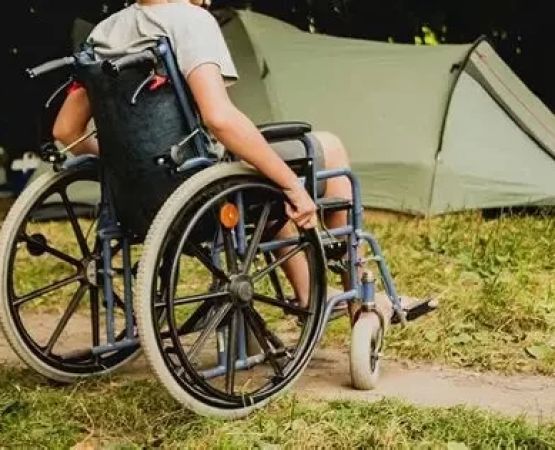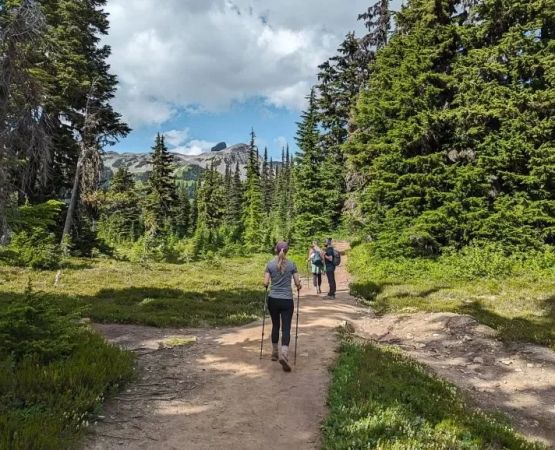- 1 - #understanding-plateau-valley-ridge-systems - Understanding Plateau Valley Ridge Systems
- 2 - #choosing-the-right-camping-location - Choosing the Right Camping Location
- 3 - #essential-gear-for-ridge-camping - Essential Gear for Ridge Camping
- 4 - #safety-tips-for-camping-in-ridge-systems - Safety Tips for Camping in Ridge Systems
- 5 - #real-camping-stories-and-experiences - Real Camping Stories and Experiences
1. Understanding Plateau Valley Ridge Systems
Plateau Valley Ridge Systems are some of the most breathtaking natural formations in the United States. They consist of high-elevation plateaus surrounded by steep valleys and ridges, offering a mix of challenging terrains and scenic beauty. Whether you’re exploring the ridges of Colorado or the vast plateau landscapes of Utah, camping in these areas provides an unforgettable outdoor experience.
What makes these regions unique is their blend of rugged cliffs, sweeping valleys, and panoramic views. The weather can change rapidly, and the terrain can be unpredictable, so understanding the geography and climate before you camp is crucial. The high elevation also means cooler temperatures at night, which can be both refreshing and challenging depending on your preparation.
2. Choosing the Right Camping Location
Selecting the right camping location in a plateau valley ridge system requires planning and awareness of your surroundings. Some areas have designated campsites with access to basic amenities, while others are remote and require backcountry camping skills. Here’s what to consider when picking a spot:
- Elevation and Terrain: Choose a location that offers stability and protection from the wind. Setting up camp too close to the ridge edge can be risky due to potential landslides or sudden weather shifts.
- Access to Water: While camping near a water source is convenient, it’s best to stay at least 200 feet away to prevent contamination and avoid unexpected flooding during rainstorms.
- Sun and Shade Balance: Depending on the season, you’ll want to balance sun exposure and shade. In summer, shaded areas prevent overheating, while in cooler months, sunlight can help maintain warmth.
Many experienced campers recommend arriving before sunset to ensure you have enough daylight to explore and set up safely. If you’re new to ridge camping, check with local rangers for updated maps and any restricted areas before setting out.
3. Essential Gear for Ridge Camping
Proper gear can make or break your camping experience in Plateau Valley Ridge Systems. The weather and terrain demand reliable, durable equipment designed for varying conditions. Here’s a breakdown of must-have items:
- Weather-Resistant Tent: Choose a tent with strong poles and wind-resistant fabric. The elevated terrain can experience strong gusts, so secure your tent with quality stakes and guy lines.
- Layered Clothing: Temperatures can fluctuate dramatically between day and night. Wear moisture-wicking base layers, insulated jackets, and waterproof outerwear to stay comfortable.
- Sleeping Gear: A high-quality sleeping bag rated for cold temperatures and an insulated sleeping pad are essential. Even during summer, ridge nights can get surprisingly cold.
- Navigation Tools: A GPS device, map, and compass are must-haves. Cell signals can be unreliable in remote ridge systems, so always have a backup navigation plan.
- Cooking and Food Supplies: Bring a compact stove, lightweight cookware, and enough food for your trip. Dehydrated meals are ideal for backpacking due to their light weight and long shelf life.
Before you head out, make sure all your gear is tested and in good working order. Unexpected equipment failure in such remote environments can quickly turn an enjoyable trip into a dangerous one.
4. Safety Tips for Camping in Ridge Systems
Safety should always be your top priority when camping in plateau valley ridge systems. These areas are known for their stunning beauty, but they can also pose hazards if you’re unprepared. Here are a few key safety guidelines:
- Monitor Weather Conditions: The weather can shift suddenly in high-elevation areas. Check forecasts frequently and be ready to move to lower ground in case of lightning storms or heavy winds.
- Wildlife Awareness: Ridge systems are home to various wildlife, including bears, deer, and mountain lions. Store food in sealed containers and never leave it unattended to avoid attracting animals.
- Stay on Marked Trails: Straying off established paths increases the risk of accidents or getting lost. Always use trail markers and follow the local camping regulations.
- Emergency Preparedness: Bring a well-stocked first aid kit and a whistle. Inform someone of your camping location and expected return date before heading out.
Staying aware of your environment and being prepared for emergencies ensures that your adventure remains enjoyable and safe.
5. Real Camping Stories and Experiences
Many seasoned campers recall the unique thrill of spending a night in Plateau Valley Ridge Systems. For instance, a couple from Colorado shared their experience camping on a ridge overlooking a valley filled with mist at sunrise. They described it as both humbling and peaceful — a reminder of nature’s beauty and unpredictability.
Another traveler recounted hiking deep into a ridge area near Utah’s Canyonlands, where they encountered unexpected rain. Their preparation paid off, as waterproof gear and careful camp setup kept them safe and dry throughout the storm. These experiences highlight the importance of planning and preparedness in ridge camping.
Whether you’re a seasoned outdoor enthusiast or a first-time camper, spending time in plateau ridge systems offers a chance to reconnect with nature on a profound level. For high-quality outdoor gear, expert recommendations, and adventure planning resources, visit Pine Cliff Resort — your trusted partner for unforgettable camping experiences.







